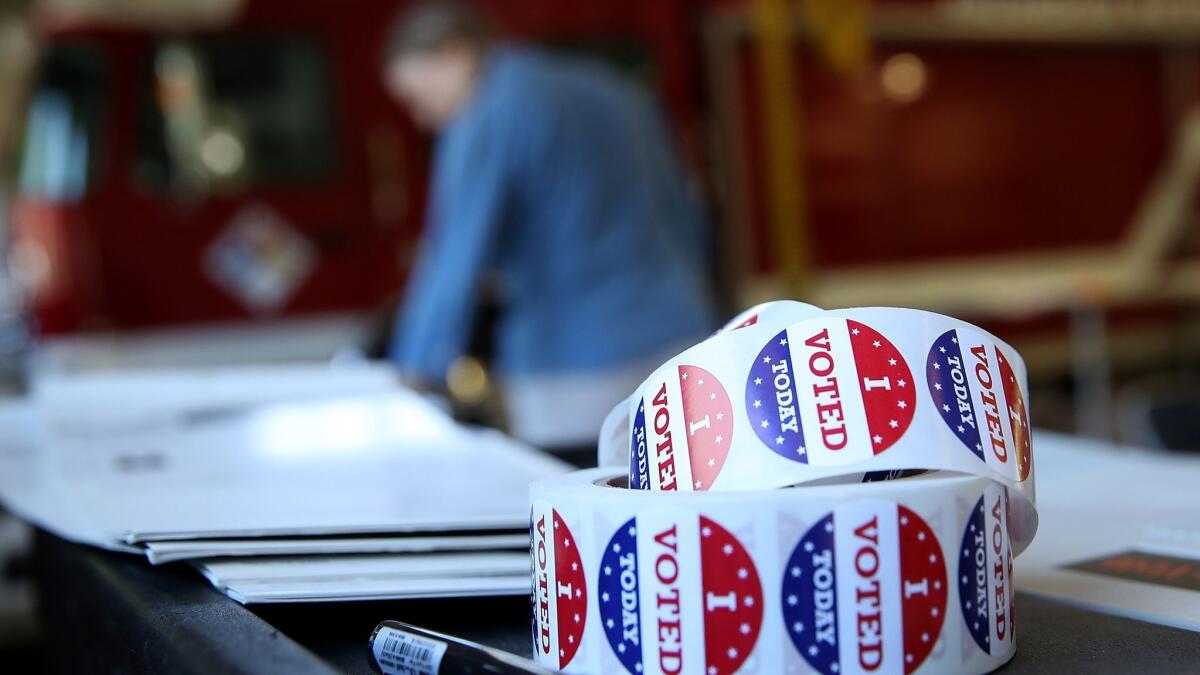Column: California voters almost always say yes to bonds, but don’t always understand the trade-offs

- Share via
Perhaps more than any state, Californians govern themselves through the ballot. Most of the attention goes to the laws they write, but voters also spend taxpayer money — a lot of it.
They do so through bonds, instructing government officials to borrow money for specific projects. It’s the closest thing to a sure bet that exists in statewide campaigns, with an approval rate hovering around 90%. Less clear is whether voters fully comprehend the implications of their ballot choice.
State general obligation bond measures approved since 1986 total more than $167.7 billion. Lenders must be repaid with interest, averaging about 5% a year, over a span of several decades. Most general obligation bond payments come from the same bank account that provides cash for services such as education, healthcare and prisons.
California’s November’s ballot: Here are the 12 propositions »
A recent report by the nonpartisan Legislative Analyst’s Office estimated that California’s general fund is currently paying off $83 billion in bond obligations. Annual debt payments total about $6 billion. That’s roughly equal to a year and a half in general fund spending on the University of California system, or about triple what the state spends on firefighting.
That’s not to say that bonds aren’t important. The dollars have most often been spent in recent years on infrastructure projects for schools and transportation. Libraries, hospitals and housing efforts have also benefited. Estimates are that California’s annual debt payments, as a percentage of all state government spending, are manageable.
The better question, though, is whether voters understand the trade-offs involved in all of that borrowing.
“When we make these decisions, we have to look at the big-picture context,” state Sen. Bob Hertzberg (D-Van Nuys) said during a legislative hearing last month on November’s slate of bond measures.
Hertzberg spent the better part of the hearing grilling the backers of Proposition 3, an almost $9-billion bond on this fall’s ballot to pay for projects focused on clean drinking water and water supply needs. Analysts project that if voters approve the plan, the state will make bond payments of about $430 million a year for 40 years.
California lawmakers craft new ways to stash away cash »
How did Proposition 3 get on the ballot? Through a signature-gathering campaign paid for by donors with a keen interest in the water projects that will be funded — a point on which Hertzberg grilled the supporters at the hearing.
“You’ve got to tell the truth,” he said to the measure’s proponents. “You back up an armored car to the treasury, and you can take $430 million out of the back door because you can poll [on] something, spend a few million dollars because it’s an issue that looks sexy to voters, and draw the dough.”
Proposition 3’s backers insisted they worked with a variety of stakeholders to identify key water supply needs across California. Their effort won’t be the only borrowing voters will weigh this fall: Four such ballot measures, totaling close to $16 billion in bonds, will be up for consideration.
Voters are rarely asked to think about which needs government should meet. In 2004, they agreed to borrow $3 billion for stem cell research. In 2008, voters said yes to $9.9 billion in seed money for high-speed rail. Even though the bonds have only recently begun being sold to Wall Street investors, it’s debatable whether voters would make the same choice if asked again.
And campaigns rarely offer enough information to fully consider the pros and cons of a bond measure. Voters must do their own homework, beginning with the understanding that a bond is a mandatory expense, an investment decision that can have profound impacts for more than a generation.
Twitter: @johnmyers
More to Read
Get the L.A. Times Politics newsletter
Deeply reported insights into legislation, politics and policy from Sacramento, Washington and beyond. In your inbox twice per week.
You may occasionally receive promotional content from the Los Angeles Times.











